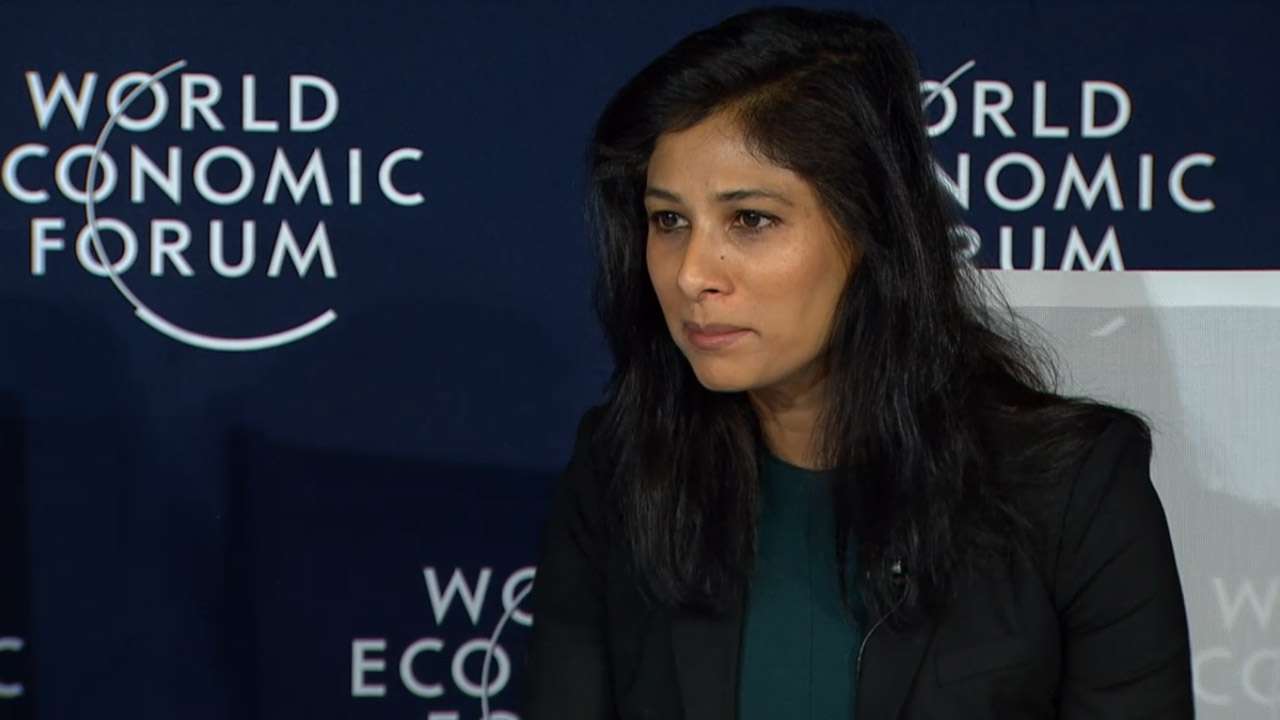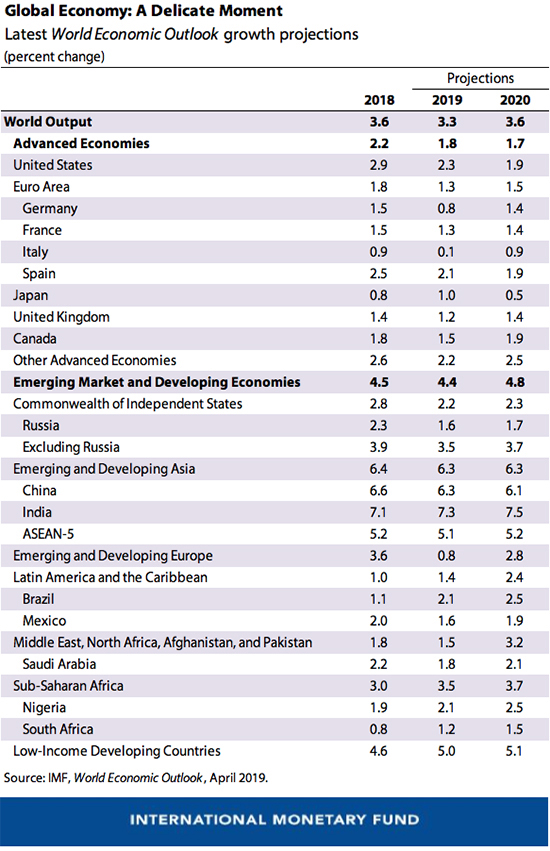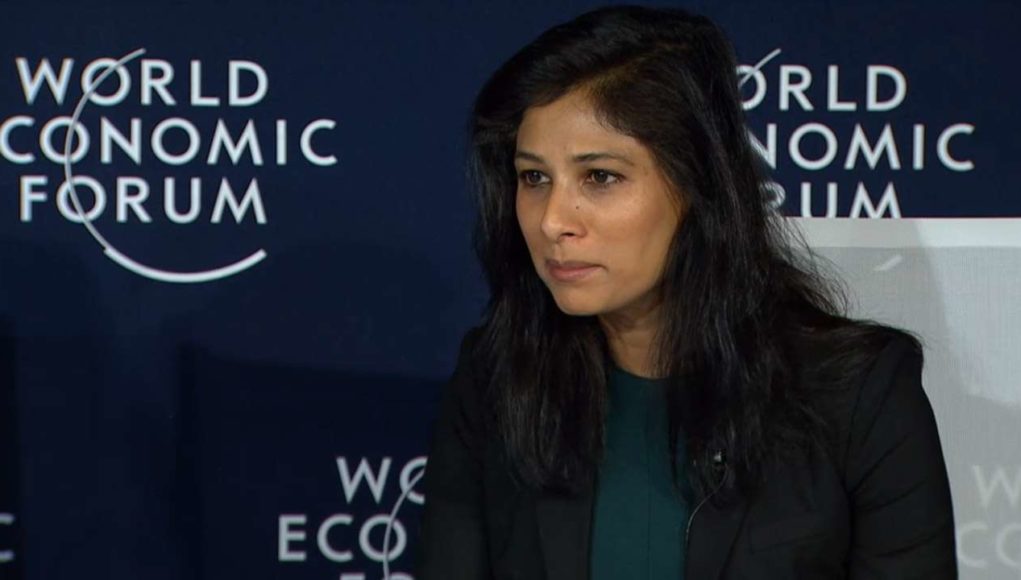With this weakness expected to persist into the first half of 2019, the International Monetary Fund is projecting a pick-up in global economic growth in the second half of this year, according to Gita Gopinath, IMF’s Economic Counsellor and Director of the Research Department.

She said global growth softened to 3.6 percent in 2018 and is projected to decline further to 3.3 percent in 2019. The downward revision in the growth of 0.2 percentage points for 2019 from the January projection is also broad-based. It reflects negative revisions for several major economies including the euro area, Latin America, the United States, the United Kingdom, Canada, and Australia.
After the weak start, growth is projected to pick up in the second half of 2019. This pickup is supported by significant monetary policy accommodation by major economies, made possible by the absence of inflationary pressures despite growing at near potential. The US Federal Reserve, the European Central Bank, the Bank of Japan, and the Bank of England have all shifted to a more accommodative stance. China has ramped up its fiscal and monetary stimulus to counter the negative effect of trade tariffs.
These policy responses have helped reverse the tightening of financial conditions to varying degrees across countries. Emerging markets have experienced some resumption in portfolio flows, a decline in sovereign borrowing costs, and a strengthening of their currencies relative to the US dollar. While the improvement in financial markets has been rapid, those in the real economy have been slow to materialize. Measures of industrial production and investment remain weak for now in many advanced and emerging market economies, and global trade has yet to recover.

With improved prospects for the second half of 2019, global growth in 2020 is projected to return to 3.6 percent. This recovery is precarious and predicated on a rebound in emerging market and developing economies, where growth is projected to increase from 4.4 percent in 2019 to 4.8 percent in 2020. Specifically, it relies on an expected rebound in growth in Argentina and Turkey and some improvement in a set of other stressed developing economies and is therefore subject to considerable uncertainty. Growth in advanced economies will slow slightly in 2020, despite a partial recovery in the euro area, as the impact of US fiscal stimulus fades and growth tends toward the modest potential for the group, given aging trends and low productivity growth.
Beyond 2020, global growth is expected to stabilize at around 3½ percent, bolstered mainly by growth in China and India and their increasing weights in world income. Growth in emerging market and developing economies will stabilize at 5 percent, though with considerable variance as emerging Asia continues to grow faster than other regions. A similar pattern holds for low-income countries with some, particularly commodity importers, growing rapidly but others falling further behind the advanced world in per capita terms.
While the global economy continues to grow at a reasonable rate and a global recession is not in the baseline projections, there are many downside risks. Tensions in trade policy could flare up again and play out in other areas (such as the auto industry), with large disruptions to global supply chains. Growth in systemic economies such as the euro area and China may surprise on the downside, and the risks surrounding Brexit remain heightened. Deterioration in market sentiment could rapidly tighten financing conditions in an environment of large private and public sector debt in many countries, including sovereign-bank doom loop risks.
Given these risks, it is imperative that costly policy mistakes are avoided. Policymakers need to work cooperatively to help ensure that policy uncertainty doesn’t weaken investment. Fiscal policy will need to manage trade-offs between supporting demand, protecting social spending, and ensuring that public debt remains on a sustainable path, with the optimal mix depending on country-specific circumstances. Financial sector policies must address vulnerabilities proactively by deploying macroprudential tools (such as counter-cyclical capital buffers)—a task made more urgent by the possibility that interest rates will remain low for longer. Monetary policy should remain data dependent, be well communicated, and ensure that inflation expectations remain anchored.
Across all economies, the imperative is to take actions that boost potential output, improve inclusiveness, and strengthen resilience. There is a need for greater multilateral cooperation to resolve trade conflicts, to address climate change and risks from cybersecurity, and to improve the effectiveness of international taxation.
This is a delicate moment for the global economy. If the downside risks do not materialize and the policy support put in place is effective, global growth should rebound. If, however, any of the major risks materialize, then the expected recoveries in stressed economies, export-dependent economies, and highly-indebted economies may be derailed. In that case, policymakers will need to adjust. Depending on circumstances, this may require synchronized though country-specific fiscal stimulus across economies, complemented by accommodative monetary policy. Lastly, adequate resources for multilateral institutions remain essential to retain an effective global safety net, which would help stabilize the global economy.





































